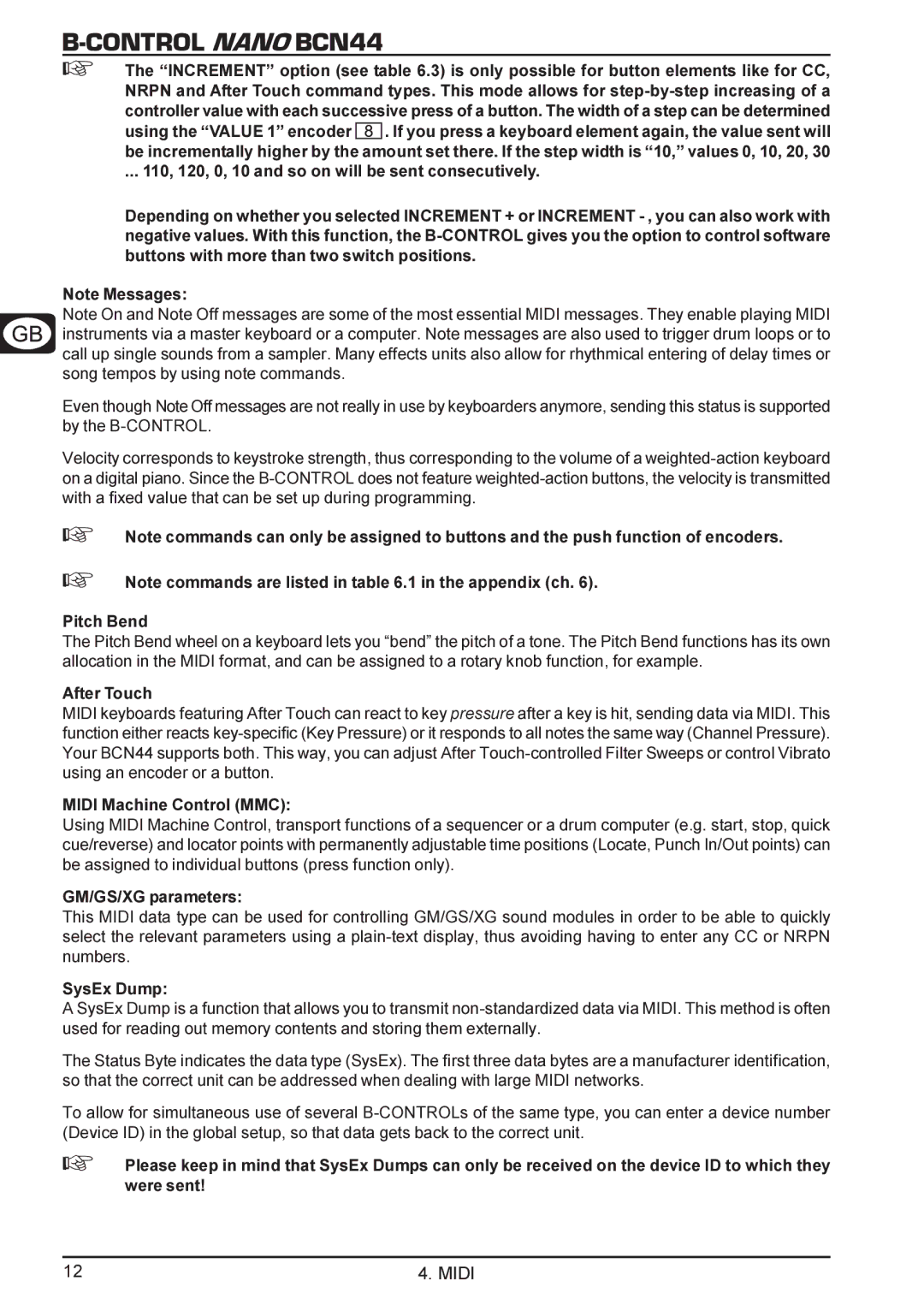
B-CONTROL NANO BCN44
+The “INCREMENT” option (see table 6.3) is only possible for button elements like for CC, NRPN and After Touch command types. This mode allows for
using the “VALUE 1” encoder ![]() . If you press a keyboard element again, the value sent will be incrementally higher by the amount set there. If the step width is “10,” values 0, 10, 20, 30
. If you press a keyboard element again, the value sent will be incrementally higher by the amount set there. If the step width is “10,” values 0, 10, 20, 30
... 110, 120, 0, 10 and so on will be sent consecutively.
Depending on whether you selected INCREMENT + or INCREMENT
Note Messages:
Note On and Note Off messages are some of the most essential MIDI messages. They enable playing MIDI instruments via a master keyboard or a computer. Note messages are also used to trigger drum loops or to call up single sounds from a sampler. Many effects units also allow for rhythmical entering of delay times or song tempos by using note commands.
Even though Note Off messages are not really in use by keyboarders anymore, sending this status is supported by the
Velocity corresponds to keystroke strength, thus corresponding to the volume of a
+
+
Note commands can only be assigned to buttons and the push function of encoders.
Note commands are listed in table 6.1 in the appendix (ch. 6).
Pitch Bend
The Pitch Bend wheel on a keyboard lets you “bend” the pitch of a tone. The Pitch Bend functions has its own allocation in the MIDI format, and can be assigned to a rotary knob function, for example.
After Touch
MIDI keyboards featuring After Touch can react to key pressure after a key is hit, sending data via MIDI. This function either reacts
MIDI Machine Control (MMC):
Using MIDI Machine Control, transport functions of a sequencer or a drum computer (e.g. start, stop, quick cue/reverse) and locator points with permanently adjustable time positions (Locate, Punch In/Out points) can be assigned to individual buttons (press function only).
GM/GS/XG parameters:
This MIDI data type can be used for controlling GM/GS/XG sound modules in order to be able to quickly select the relevant parameters using a
SysEx Dump:
A SysEx Dump is a function that allows you to transmit
The Status Byte indicates the data type (SysEx). The first three data bytes are a manufacturer identification, so that the correct unit can be addressed when dealing with large MIDI networks.
To allow for simultaneous use of several
+Please keep in mind that SysEx Dumps can only be received on the device ID to which they were sent!
12 | 4. MIDI |
